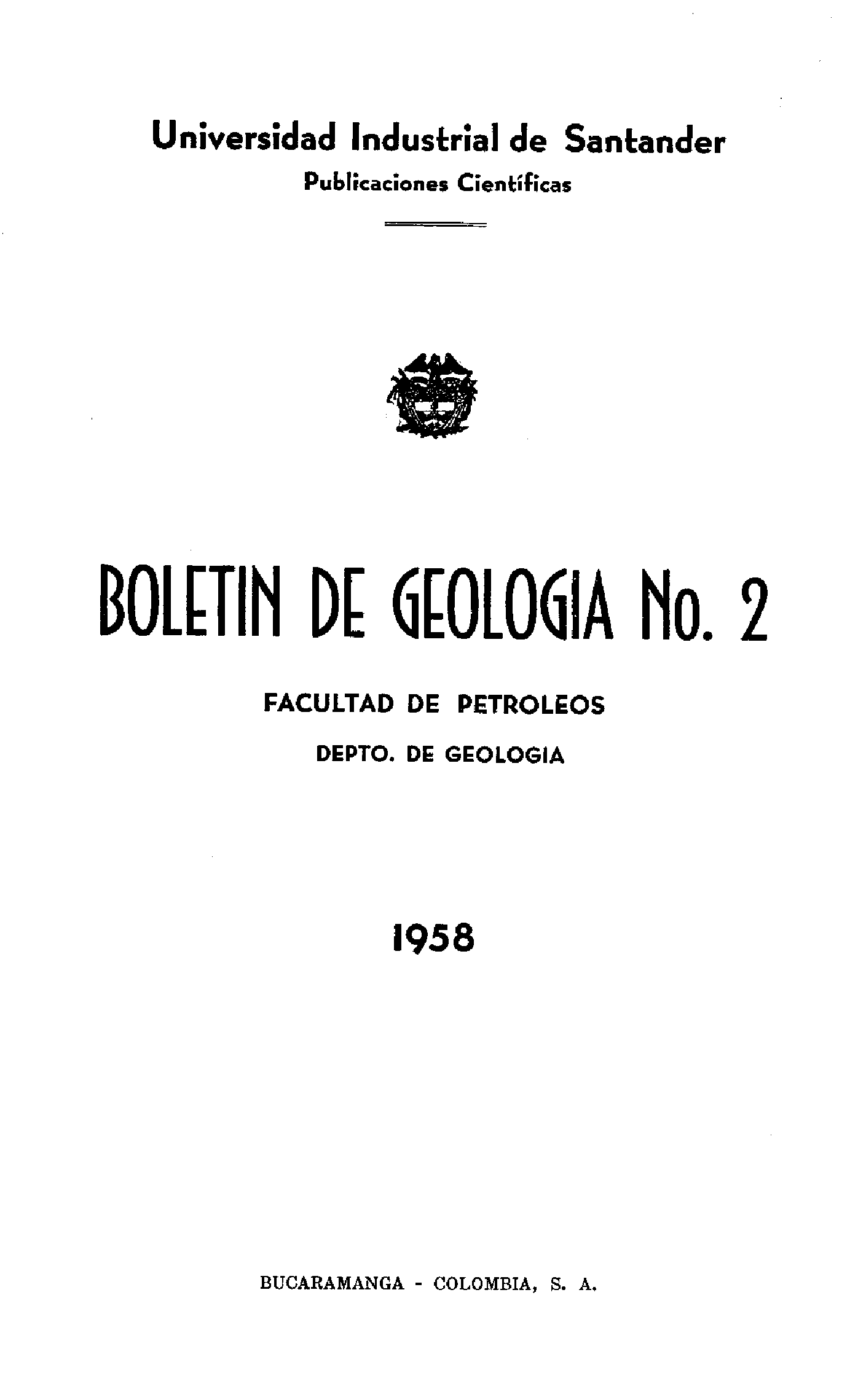Publicado 1958-09-16
Cómo citar
Resumen
Se estudia una zona de la cordillera Oriental Colombiana (Sur América) conmprendida entre San Gil y Chiquinquirá. Se trata de un área fundamentalmente cretácica si bien en algún punto atteran niveles anteriores (formación Girón: jura-triásico). Sobre "Girón" o sobre un basamento igneo y metamórfico se apoya transgresivo el cretácico que empieza por arenuscas y conglomerados cuya edad varía de S a N, desde el jurásico superior al hauteriviense respectivamente. Por encima de estos niveles basales la característica más destacada del cretácico es la aparición de areniscas hacia el W. Desde el punto de vista estructural destaca en esta región la existencia de amplias zonas tabulares, flexiones o pliegues de gran radio. Comparando estas estructuras con las áreas inmediatamente más al N se abserva que se trata de una adaptación de las capas cretácicas sobre fallas más profundas que se manifiestan hacia el N por el mayor grado de desmantelación existente.
ABSTRACT
A zone of the Colombian Eastern Cordillera between San Gil and Chiquinquirá is studied. This is essentially a Cretaceous area although older layers (Jurassic-Triassic "Giron"), outcrop at several points. The cretaceous overlies transgressively the "Giron" or igneous and metamorphic hasement, starling with sands and conglomerates the age of which yaries from south to north from Upper Jurassic to Hanterivian. Above these hasal layers the most outstanding characteristic of the Cretaceous is the appearance of sandy intercalations in the predominantly siraly section, ward the west. From the structural view-point, broad tabular aereas and flexures or folds of large radius are notable. The area of deeper erosion to the north reveals that the structures represent an adaption of the Cretaceous heds to deep seated faulting.
